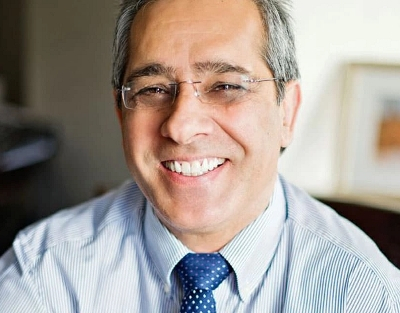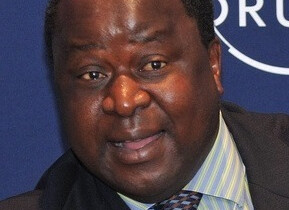Byline: Sam Nassimov, MD of Premier Hotels & Resorts

We recently marked the 10-year milestone of Instagram, a platform that has profoundly shaped and, some might argue, even birthed the concept of influencer marketing that at its core is about fostering authentic relationships and real connections with brands. Yet, as we reflect on the past decade, it’s evident that there are certain brands that still struggle to get it right.
In a Forbes article, the rising trend of long-term partnerships between influencers and brands was highlighted. These enduring relationships not only establish trust between an influencer’s followers and the brand, but also inspire creative risk-taking by the influencer, often yielding substantial rewards.
There is a gigantic sea of influencers hungry for brand attention: newbies with nano-audiences trying to build their followings, casual influencers who have great audiences but are new to working with brands, and established influencer “pros” with loyal audiences and extensive experience working with brands. The more we have in common with them, the more likely we are to heed their advice.
Influencers are more than just content creators; they serve as “voices of the crowd”. They possess an intimate understanding of their audiences and often identify emerging trends well before they become apparent through traditional market research and data analytics. Brands that nurture close relationships with influencers, gain a competitive edge, enabling them to launch more effective and innovative campaigns.
“Particularly in the hospitality industry, I believe that there is a time and place for influencers, but the success will largely depend on what content is created and how it is created,” says David Shevil, group marketing manager of Premier Hotels and Resorts.
Today, it’s crucial for brands to be discerning and strategic when selecting influencers and communication channels.
Distinguishing the right influencers
It’s essential to clarify that not all influencers are paid professionals.Those who solely aim to amass followers for the sole purpose of representing any brand that comes their way, aren’t genuine. True influencers organically grow their audiences over time as people connect with their content. It’s here that we see the power they have to make a genuine impact. A large following doesn’t necessarily equate to substantial influence. Influence is rooted in trust and authentic engagement, not merely likes and follows.
“If there is a mismatch between the influencer (and their followers) vs your target market, whatever content they create for you will essentially be lost.”
“I think it’s almost a matter of horses for courses – the influencer and or the profile of influencer must suit and align to your target market. But if there is a mismatch between the influencer (and their followers) vs your target market, whatever content they create for you will essentially be lost,” Shevil shares.
Developing worthy content
“Some of the influencers that we have entertained have genuinely created interesting and worthy content that has opened new markets to us. They have created sincere, interesting and classy content that we have managed to leverage off,” he says.
“The greatest success that we have had with influencers was the Real Housewives of Durban show.”
“The greatest success that we have had with influencers was the Real Housewives of Durban show and their contestants were from diverse backgrounds. The result was that we managed to leverage off their followers in terms of revenue from room nights. The content that was created while staying at the hotel was clever and “real” – it seemed to resonate with our target market and it proved to be a huge success on our social media channels,” Shevil concludes.
So how can your brand evolve its relationship with influencers?
The realm of influencers is vast, with newcomers seeking to build their followings, casual influencers with substantial audiences but limited brand experience, and seasoned influencer “pros” with devoted followings and extensive brand collaborations.
Selecting the right influencer partner entails assessing their skills, audience alignment, and their willingness to collaborate. Additionally, it involves navigating influencers’ reputations, as some may have questionable track records, making the quest for suitable partners a daunting endeavour.
An influencer known and respected by other influencers, typically has a strong reputation so do examine influencers’ previous brand collaboration and campaigns through their past posts.
Influencers don’t exist in isolation; they operate within communities. An influencer known and respected by other influencers, typically has a strong reputation so do examine influencers’ previous brand collaboration and campaigns through their past posts.
Don’t rely solely on algorithms for influencer research: platforms often have limited access to third party data about influencers. Lastly, don’t hesitate to explore niche communities; engagement and significant impact can emerge from influencer audiences slightly outside the mainstream. When these audiences encounter different yet relevant content in an influencer’s feed, they tend to take notice and engage.
Pay to play influencers
In the travel and tourism sector, while reliable influencers exist, some “lower – tier ” influencers view a free night as a means to boost their personal brands. Entrepreneurial influencers, whether highly skilled or just eager prospectors, offer a range of fee-based services.
The exchange of a night’s stay for exposure is a familiar practice in our digital era. However, there’s a recent trend of entitled influencers making excessive demands without always delivering on their end of the bargain. They’ve recognized their power, measured by their followers on TikTok, YouTube, or Instagram. It’s an influencer seller’s market, dictated by the traffic they can generate.
Consult. Collab. Build
Magic happens when brand, influencer, and audience interests align. To reach this point , brands should engage in conversations with influencers, listening to their insights before planning and launching campaigns.
One valuable approach is to assemble a group of influencer partners for a focus group. You can enquire about:
- Brand positioning and reputation from their perspective
- The value the brand offers their audiences
- The do’s and don’ts of engaging with their audiences
- Overused messages and tactics
- Unmet audience desires
These insights should be shared with creative, strategy and planning teams fostering a cohesive campaign roll-out.
Monitoring and re-engaging
After launching your campaign, continuously seek feedback after influencers post about your brand, identify trends and effective approaches. This encourages ongoing, authentic endorsements. When influencers have mutually beneficial relationships with brands they’re more likely to engage in long-term collaborations rather than sharing their audience with competitors.
To maximise the potential of your influencer marketing strategy, cultivating real relationships is paramount. These connections extend beyond a single post; they require ongoing communication, increased collaboration and authentic support for the brand. Developing real-life relationships through personal contact is not just a luxury in this industry; it’s a necessity.
Cover image by Maddi Bazzocco on Unsplash







